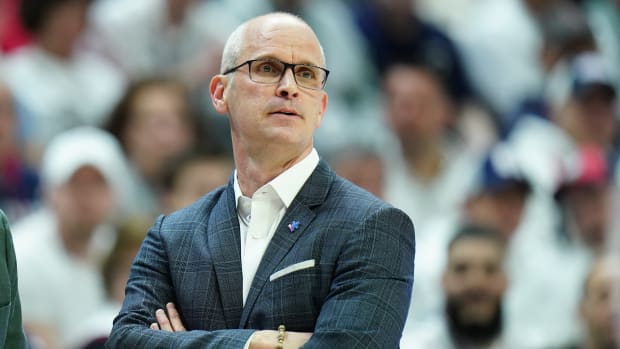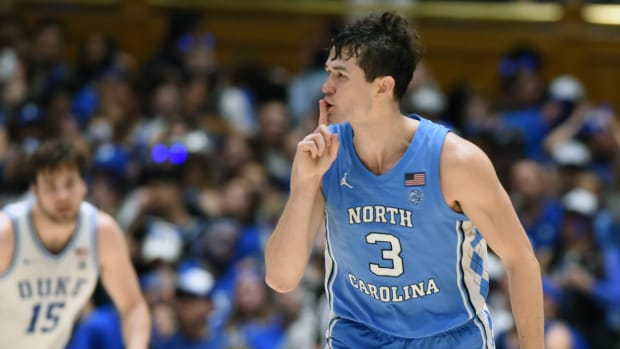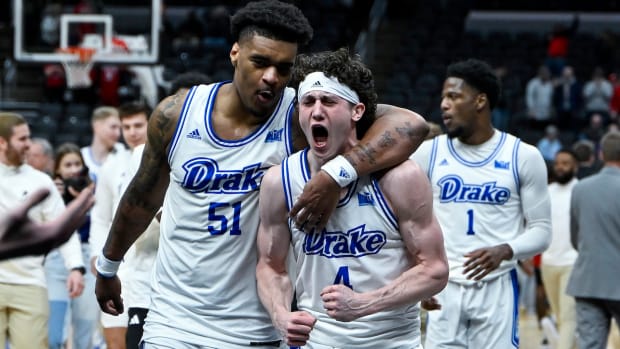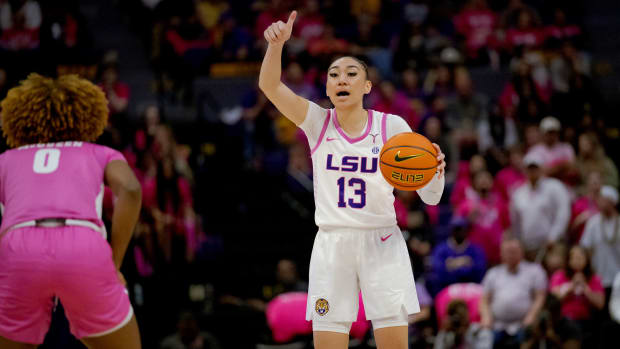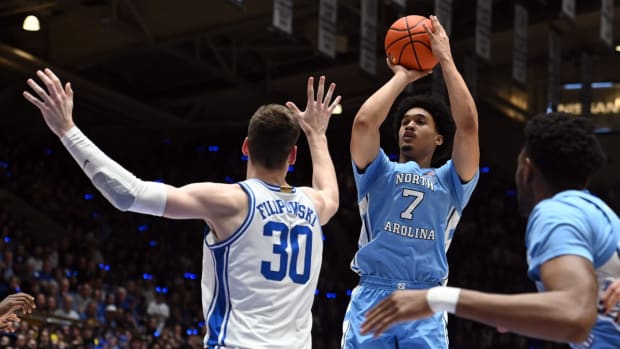Stanford Cuts and Ivy League's Fall Sports Decision Are Just the Beginning for College Athletics
Wednesday was the worst day in college sports since THE worst day, March 12, when COVID-19 shut everything down. The bad news emanated from both coasts, then hit in the heartland as well. It was a daunting, sobering, ominous day.
Ohio State, which fields more varsity athletic teams than any school in the nation, paused voluntary workouts for seven programs after an undisclosed number of positive COVID-19 tests, joining a growing list of schools to halt efforts to bring back sports. Earlier, the Ivy League announced that it will play no varsity sports for the rest of the calendar year—maybe they’ll try to move the fall sports to spring 2021, but there are no guarantees. And before both of those dispiriting decisions arrived, Stanford dropped this stunner: the preeminent all-sports athletic program in America is dropping 11 varsity programs after the 2020–21 season ends.
The Ohio State and Ivy League developments tell you where we are in college athletics—adrift, lacking answers and failing to gain ground on a relentless pandemic. The Stanford development tells you where we’re going if the current trends continue—toward the economic obliteration of college sports as we know them.
Almost everyone will be eliminating sports. Absolutely everyone will be slashing budgets. Scholarships, educational opportunities and jobs will all disappear in large numbers.
If there is not a miracle turnaround of our dismal coronavirus testing numbers by Aug. 1, all FBS conferences could join the FCS Ivy League in delaying fall sports to the spring—and just hoping things work out then. (Because, trust me, there is no great plan for what to do in that scenario.) If we have a compromised football season, the financial repercussions will be awful. If we have no football season, the financial repercussions will be far worse.
An anonymous Power 5 athletic director told me in early April that if there is no football season, “We’re all f-----. There’s no other way to look at it, is there?” Three months later, those words land with increased weight.
Taken collectively, the college news of the day leaves this conclusion: We all knew COVID-19 is wreaking havoc upon athletics, and now we’re seeing how bad it can get.
Already, 56 varsity programs have been dropped this year at the NCAA Division I level. And a lot of schools are holding out hope for football to save them from adding more to that pyre. If Stanford, with all its success and willingness to try to be great at everything, is swinging a heavy blade, that could provide cover for dozens of other schools.
For a quarter century, Stanford has been the gold standard of Olympic sports. In 2019 the school won its 25th consecutive Learfield Directors' Cup for all-sports excellence, and it certainly would have won again this year if not for the pandemic shutdown. National champions and Olympians grow like the towering palm trees that line the entry to the school.
Yet the Cardinal targeted 11 varsity sports for elimination at the end of the 2020–21 season: men’s and women’s fencing, field hockey, lightweight rowing, men’s rowing, coed and women’s sailing, squash, synchronized swimming, men’s volleyball and wrestling. In competitive terms, the school spared most of its best sports—nothing that was lost should jeopardize Stanford’s Learfield Cup hegemony. But in human terms, 240 students and 22 coaches just had their lives turned upside down.
With 36 sports, you could argue that the Cardinal were trying to do too much athletically—only Ohio State had more, with 37, buttressed by a far larger athletic budget. But a huge athlete population is part of the magic vibe on a campus where 12% of the undergraduate student body played a varsity sport, most of them while tackling some of the most challenging course loads in the country.
A solution proffered by many Wednesday: just dip into that $27.7 billion (with a “b”) university endowment to prop up the athletic budget. But that shows no understanding of how endowments work.
Stanford says 75% of its endowment money is earmarked for specific purposes by donors, and at a place like Stanford the purposes are overwhelmingly academic. (There are athletic endowments, including the head-coaching positions on many varsity teams.) You can’t just dip into the endowment bank account for whatever needs may arise on campus. Also, endowment spending is capped at five% per year, since the goal is to keep the university well-funded in perpetuity.
Given a yearly full cost of attendance price tag in the neighborhood of $75,000, a lot of Stanford students receive financial aid. Two-thirds of the annual endowment spending goes toward paying those need-based grants.
As much as Stanford likes winning sports championships, it is hardwired to produce rocket scientists, tech wizards, lawyers and titans of industry. That isn’t going to be altered to save the rowing team.
Frankly, Stanford athletics has “punched above its weight,” to quote athletic director Bernard Muir, for a long time. Yes, the place sells itself to recruits, and some of the facilities are among the best in the nation. But Pac-12 revenue lags behind the rest of the Power 5, and the school simply isn’t going to spend as outrageously on athletics as the football powers. In terms of support staff and attending to the athletes’ every whim, Stanford is farther from the lavish spenders than you might think.
So, no, the sports tail does not wag the academic dog at places like Harvard, Princeton, Yale and Stanford. They don’t put 100,000 fans in the stands for football or 20,000 in the arena for basketball, nor do they aspire to. Hell, the Ivy League schools don’t even dole out athletic scholarships.
In times of crisis, we see that sports are even less important at these schools now than they used to be. The Ivy League has now led the way twice in shutting down sports—on March 10, it became the first conference to halt its basketball season; and now it is the most prominent conference to punt football to a later date.
Are they trend setters again, or outliers? Football is a different beast, and the Power 5 won’t give up on a fall season easily. But if Wednesday is any indication, the entire college enterprise is hurtling toward a very bad fall after a very bad spring.
If it comes to that, we can all settle in for an autumn of self loathing.
One of the oldest aphorisms in sports is to respect your opponent. America didn’t respect COVID-19—not enough to stay quarantined and wear masks and do what it had to do. Complacency, arrogance and stubbornness didn’t get the job done, and now the increasingly costly bills for that disrespect are coming due.

